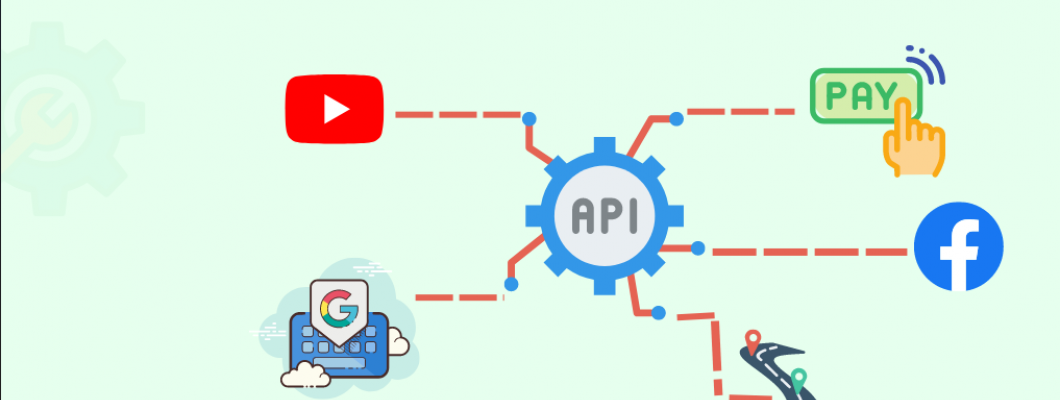
Introduction
Third-party APIs (Application Programming Interfaces) have become indispensable in modern software development. They enable developers to embed powerful features—like payments, maps, authentication, messaging, or analytics—into their apps without building them from scratch. From Google Maps to Stripe, from Twilio to Firebase, APIs allow businesses to innovate faster and build scalable applications. But, with great power comes great responsibility. Poorly integrated APIs can slow down your app, break user experiences, and create major security loopholes. In this blog, we’ll explore the most common pitfalls developers face when integrating third-party APIs, and more importantly, how to avoid them for a secure and seamless development process.
1. Skipping the Documentation
Pitfall:
One of the first—and often most damaging—mistakes developers make is diving into integration without reading the documentation thoroughly. This can lead to incorrect configurations, missed features, or misuse of the API altogether.
How to Avoid It:
Always read through the API documentation before starting.
Understand rate limits, request methods, response formats, authentication methods, and error codes.
Use sample requests and responses to test endpoints.
2. Not Planning for API Versioning
Pitfall:
Third-party APIs frequently undergo updates and version changes. If you’re hardcoded into version 1 of an API and the provider sunsets it, your app could break overnight.
How to Avoid It:
Use versioned endpoints (/v1/, /v2/) wherever available.
Monitor release notes and changelogs from the provider.
Set up a maintenance schedule to periodically review API versions used.
3. Inadequate Error Handling
Pitfall:
APIs can fail—due to downtime, bad inputs, network issues, or server errors. Without proper error handling, these failures result in crashes or blank screens.
How to Avoid It:
Implement comprehensive error-catching logic for HTTP status codes (e.g., 400, 401, 403, 500).
Display user-friendly error messages.
Log failed requests for future debugging.
Use retry strategies with exponential backoff for transient failures.
4. Poor Security Practices
Pitfall:
Hardcoding API keys or failing to encrypt sensitive data during transmission exposes your app to serious vulnerabilities like key theft or man-in-the-middle attacks.
How to Avoid It:
Store API keys and secrets in environment variables or secure vaults.
Use HTTPS for all API communications.
Rotate keys regularly and monitor usage logs.
Apply role-based permissions or scoped tokens when possible.
5. Ignoring Rate Limits and Quotas
Pitfall:
Most APIs enforce usage limits. Surpassing these thresholds can lead to throttling or even temporary bans.
How to Avoid It:
Read and respect the API’s rate limits.
Build in logic to queue or throttle requests based on limits.
Use caching to avoid making redundant API calls.
Monitor API usage via dashboards or analytics tools.
6. Over-reliance on a Single Provider
Pitfall:
Relying on a single API provider for mission-critical functions creates a single point of failure. If their service goes down, your app does too.
How to Avoid It:
Identify fallback APIs or alternative providers.
Build an abstraction layer to switch providers with minimal changes.
Store essential data locally in case external services are temporarily unavailable.
7. Lack of Testing and Monitoring
Pitfall:
Assuming your API integration will “just work” without continuous testing is a major oversight. APIs can degrade over time due to upstream changes.
How to Avoid It:
Write unit tests for your API integration logic.
Test edge cases, failures, and high-load scenarios.
Use monitoring tools (like Postman monitors, Sentry, or Datadog) to track API response time and uptime.
Set up alerts for slow responses or abnormal error rates.
8. Not Validating API Responses
Pitfall:
If you blindly trust data coming from an API, you’re vulnerable to bad data, injection attacks, or even app crashes from unexpected formats.
How to Avoid It:
Sanitize and validate API responses before using them in your app.
Use JSON schema validation tools to ensure consistency.
Create defensive coding mechanisms for nulls, missing fields, or malformed objects.
9. No Caching Mechanism
Pitfall:
Calling an API for the same data repeatedly can slow down your app and inflate usage costs.
How to Avoid It:
Implement local or in-memory caching for frequently accessed data.
Use HTTP caching headers (ETag, Cache-Control) where supported.
Apply time-based expiration logic.
10. Not Abstracting API Logic
Pitfall:
Tight coupling between your app’s core logic and the API makes maintenance difficult and provider changes expensive.
How to Avoid It:
Encapsulate API logic in separate modules or services.
Use an interface-based architecture or adapter pattern.
This makes swapping APIs or upgrading to a new version easier.
Best Practices for Seamless API Integration
To sum it all up, here are some best practices you can follow:
Thoroughly read documentation.
Use versioned endpoints.
Secure API keys and use HTTPS.
Monitor usage, and handle errors gracefully.
Validate inputs and outputs.
Don’t rely on a single API.
Test and monitor regularly.
Abstract API logic from business logic.
Conclusion
Third-party APIs are essential building blocks in the world of agile, connected applications. But integrating them effectively is more than just plugging in an endpoint—it requires a thoughtful, strategic approach to avoid pitfalls that could impact performance, security, or reliability.
By identifying common mistakes and implementing proactive measures, you can make your API integrations more robust, efficient, and scalable.
Whether you're building SaaS products, e-commerce sites, or mobile apps, mastering third-party API integrations will empower you to ship faster, scale better, and sleep easier.

Leave a Comment